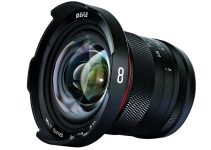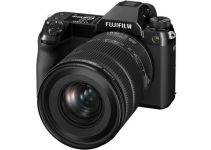The little glimpses and snapshot posts are over, the Red Komodo is finally here! Camera releases are a dime a dozen these days; in the last few months, we’ve seen several new offerings from Sony, Canon, Blackmagic, and RED. If you’re considering picking up an A7S III, a C300 Mark III, an EOS R5, an URSA Mini Pro 12K, or a Red Komodo, there are a lot of factors to consider.
All these new cameras are basically in the same ballpark price-wise ($4K-$10K), are packed with unique feature sets, and have various pros and cons that can either make it your dream setup or just another paperweight on your desk. Joey Helms is here with an early look at the Red Komodo and five important reasons for you to take this opportunity to dive into the Red ecosystem.
REASON I – REDCODE RAW + RED SENSOR
The look of the images it captures is inarguably the most important feature of any camera, and this is an area where Red has never disappointed.
Since the inception of the Red One in 2007, the iconic ‘Red look’ has been an awe-inspiring vision. It is ‘the look’ that we associate with all the big-budget films, and when you see the colors, the contrast, the subtle qualities of the gradation in the highlights, you know that you’re looking at something professional.
That professional quality that Red produces makes almost every other camera look a little less-than, and the Komodo 6K finally puts that high-end look and feel into the hands of independents, documentarians, and gorilla filmmakers by offering it at a price point that is easily in our grasp.
Don’t forget about Red’s amazing Redcode Raw codec with its extremely advanced compression technology that allows filmmakers to capture high-quality images with small file sizes. It’s a no-compromise system that leaves basically every other raw codec in its dust. With Red, you have more compression options for raw than anyone else.
REASON II – COMPACT SIZE
Red cameras are professional tools that are designed to be operated by groups of people who are working together to capture the impossible. The Red Komodo, however, represents a seismic change in Red’s raison d’être.
Originally designed as a crash camera, a high-end GoPro replacement to meet the quality specs of top tier filmmakers, the Komodo is small enough, light enough, and easily transportable for a solo shooter to pack and take with them on their trips all over the world and to rig-out as the filming situation dictates.
REASON III – MODULARITY & AFFORDABLE ACCESSORIES
There has always been one serious downside to Red’s cameras of the past and that was their reliance on proprietary media and accessories.
Sure the camera ‘brain’ might be $15,000 or so, but to rig out a DSCM2 camera with all of the necessary bits and pieces and media to film you were looking at a total cost around twice what you expected. That isn’t the case with the Komodo.
The Komodo uses Canon BP-955 & BP-975 Batteries, affordable CFast media instead of proprietary RedMags, and a built-in RF Mount, which can be adapted to EF, PL, and a multitude of other fittings to accommodate your existing lens kit.
*As a bonus, there are rear filter adapters for the RF mount to slide in NDs, and even focal adapters to get your shots closer to that full-frame look.
One top of all of that, cages and mounting accessories are hitting the market from Wooden Camera, SmallRig, and Tilta to let you build this beautiful camera out into the rig that works best for your needs. Red’s accessories have always been top notch, but to the little-guy they were always priced a bit too far out of reach. Now we have it all.
REASON IV – GLOBAL SHUTTER
Nothing says amateur filmmaker more than the jello-y, wobbly shots of a camera with a rolling shutter.
Most modern camera systems read the image from the sensor from top-to-bottom, and depending on that readout speed, you can get some nasty distorted artifacts. Vertical lines will bend in the direction of your pans, flashes will only light up one half of the screen, and shaky tracking shots could seem like you’re peering through a plate of jello.
Not with the Komodo, Red built this fantastic little camera with a global shutter meaning all of the pixels are recorded simultaneously, eliminating all of those issues we see with DSLRs and the like.
By placing a global shutter in the camera, but still being able to capture the incredibly high dynamic range and fantastic color that Red is known for really lets you know that Red has put a lot of their know-how into this new little camera. They aren’t cutting corners; they’re giving you everything they’ve got.
REASON V – RED COMMUNITY
The Red Community is a tight-knit group full of incredibly professional and talented filmmakers. Red setup the RedUser.net online community long before Facebook Groups were a thing, and Red users have populated it with fantastic resources for almost everything you’d need to know when working with a Red and many other systems too.
I’m calling a little BS on this reason, but only because you don’t need to be a Red owner to be a part of this online community. You can go over to RedUser.net, create a free account, and start learning from and sharing with the Red community today. These are people at the top of their game and they’re always willing to help people who are in need.
Competition
There is a lot of competition in this price range and resolution, and if you’re just comparing the specs of the Komodo to the A7SIII’s amazing low-light, or the new Ursa Mini 12k’s ridiculous (I mean that in a good way) resolution some of the specs might seem a little lackluster on the surface.
It might not be capable of filming 240fps in 4K, or using moonlight as a key source for a scene, but when you buy into the Red ecosystem, you’re entering a place of consistent, proven quality that is known for its ability to tackle the impossible.
The competition flashes a lot of gimmicks at you, but Red offers a very barebones, workhorse solution that produces a quality like no other.
Who was this camera made for?
As I touched on earlier, Red had originally intended this camera as a replacement for action and crash cameras, something small that someone on a $100 million shoot could destroy without worry, but also be able to get their Netflix deliverable past QC.
This camera is great as a B-Cam for existing Red Owners, a fantastic option for Indie Filmmakers, perfect to fly on a gimbal, packs well for travel and documentary filmmakers, and offers an affordable path into the Red ecosystem for the budding professional.
If you’re in the market for a new rig, you should consider picking one up. It won’t be the last camera you ever own but it will open you up to a more professional world, and you’ll love everything that you shoot.
[source: Joey Helms]
Disclaimer: As an Amazon Associate partner and participant in B&H and Adorama Affiliate programmes, we earn a small comission from each purchase made through the affiliate links listed above at no additional cost to you.



